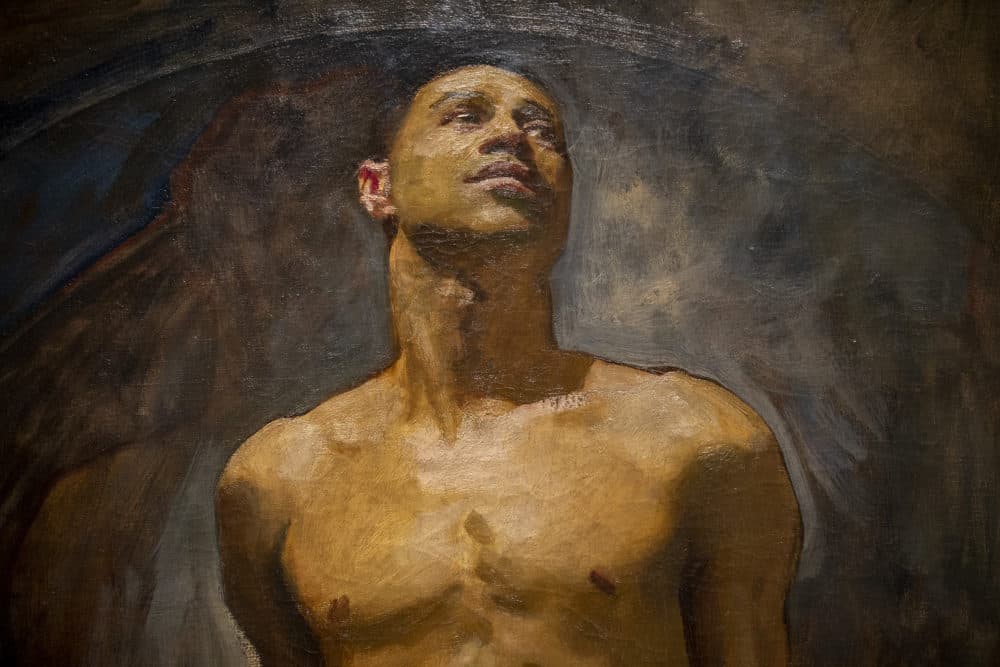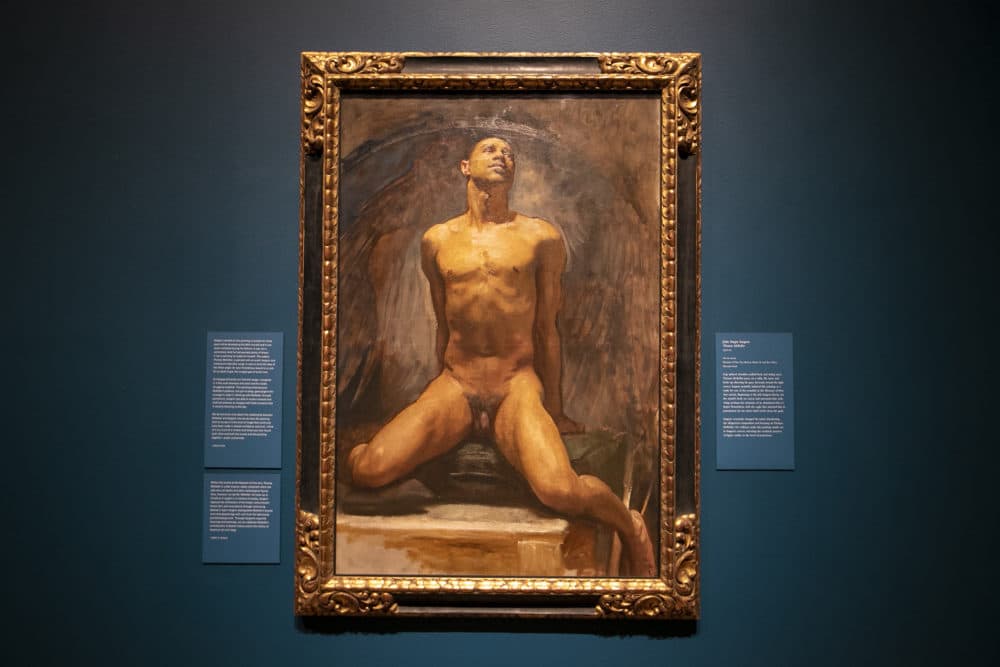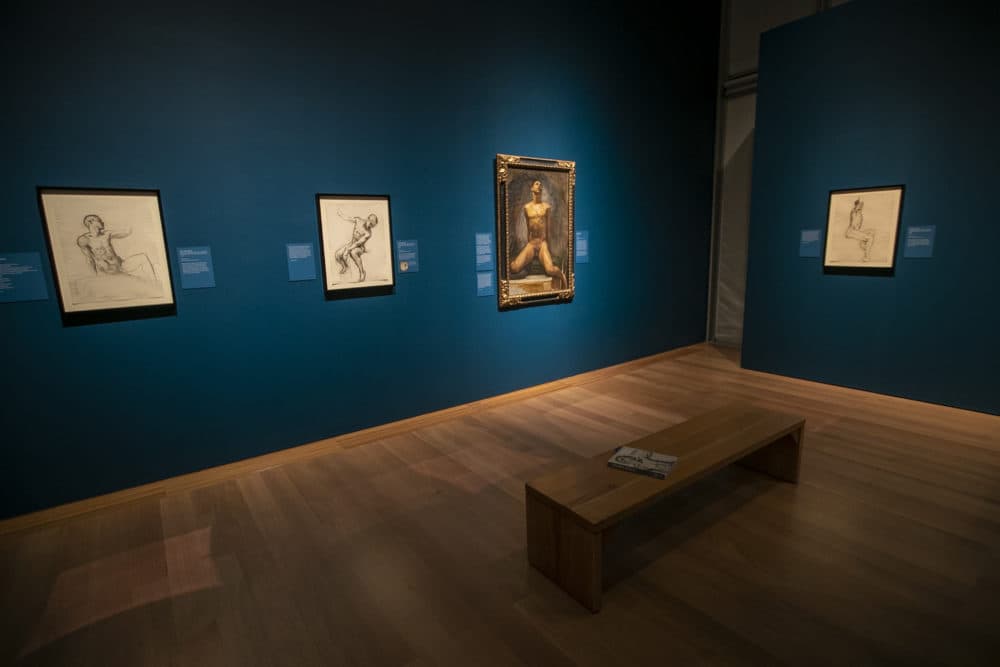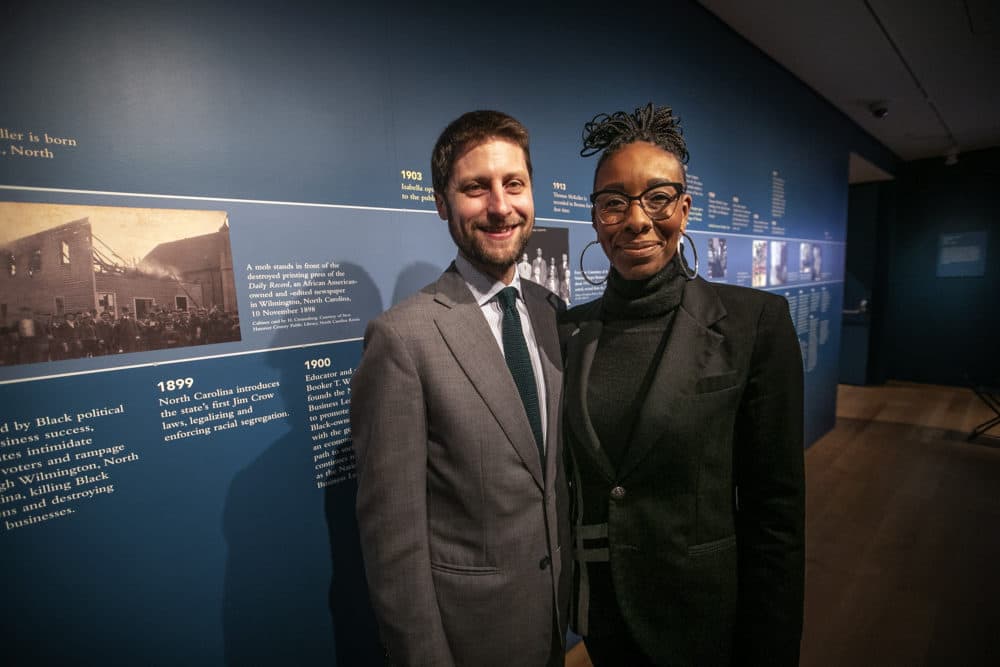Advertisement
As Gardner Reopens, Revisiting The Black Model Behind John Singer Sargent's Most Famous Works

Editor's note: This story contains an image of an art portrait of a nude man.
The Isabella Stewart Gardner Museum reopens for visitors on Wednesday, after closing in March because of the pandemic. One exhibition whose run was cut short, titled "Boston's Apollo," is now back on view until Oct. 12.
Completed in 1921, it portrays white gods and goddesses dancing and playing music.
Although all of the deities are white, the primary model for the figures was a Black man, a discovery made by Isabella Stewart Gardener Museum curator Nat Silver.
"I first came across a folder of drawings in the Gardner storage facility, which I had never seen before," Silver told Radio Boston. "They were 10 works on paper, signed by John Singer Sargent, and I thought, 'how have I not seen these before?' "
The drawings were sketches for Sargent's Museum of Fine Arts mural, "Apollo and the Muses."
"The man in the drawings was Black and all the figures on the ceiling were white," Silver explained, "and I thought, 'what's going on here? I want to know more about this man and his role in the creation of one of the public works.' "
The discovery led to a three-year long effort to tell the story of the man in the drawings — a man named Thomas McKeller.

McKeller was a Roxbury resident, who left Wilmington, North Carolina, as a teenager in the wake of racial violence in the South in the 1910s.
"He came to Boston, at the very least, looking for new opportunities," said Silver.
He worked as a bellhop at the Hotel Vendome in Boston. It was in the hotel's elevator where he met Sargent, who invited him to model for the MFA commission.
The relationship between the men lasted eight years. Sargent would specifically request to work with McKeller on each visit to Boston.
McKeller also served as the model for a Sargent mural at Harvard's Widener's Library, and, from the neck down, he modeled for a portrait of former Harvard President Abbott Lawrence Lowell.
In each work, his Black body is transformed into white figures.
"He becomes really the unsung hero of Boston's public art works, and it's only today that he's getting the credit for what he did," Silver said.
Advertisement

Yet, his compensation was no where near what Sargent received, and the exhibition examines broad power differentials between the two men.
For instance, Sargent was paid $40,000 for the mural at the MFA. McKeller only received $30.
Silver and Gardner Museum staff put together the exhibit with community collaborators. Those artists, writers and curators of color were not on staff at the museum but directly contributed to the creation and presentation of the exhibit.
Theo Tyson, a writer and curator in Boston, was one of the collaborators. Tyson told Radio Boston she was surprised to learn of McKeller's existence.
"To know that one of his best and longest muses was a Black man, I was completely blown away," said Tyson. "To know he was completely erased, no one had heard of him, people didn't know his story, even his family wasn't aware of how important he was to the arts."

The exhibition closed after just five weeks due the coronavirus. Now, as it reopens amid an urgent national conversation on race, its curators feel it is even more salient.
"These questions were being asked in many communities in the U.S., black communities, but they need to happen beyond that," said Silver. "If this exhibition can contribute to that and help foster those conversations, then we're doing our job."
This segment aired on July 15, 2020.

